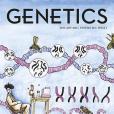《Human Genetic Diversity in the Japanese Archipelago》是S-Stage出版的圖書,作者是Timothy A. Jinam
基本介紹
- 中文名:Human Genetic Diversity in the Japanese Archipelago
- 作者:Timothy A. Jinam
- 出版社:S-Stage
- 出版時間:2015年3月
- 頁數:147 頁
- 裝幀:Hardcover
- ISBN:9781559011273
內容簡介
The Japanese Archipelago stretches approximately 3,000 kilometers from Hokkaido in the north to the Ryukyu Islands in the south, and has seen human activity since at least 30 thousand years ago (KYA). The Jomon period from 16 to 3 KYA is associated with cord-marked pottery and the people at that time, who were hunter-gatherers, occupied a range of locations across the Japanese ...(展開全部) The Japanese Archipelago stretches approximately 3,000 kilometers from Hokkaido in the north to the Ryukyu Islands in the south, and has seen human activity since at least 30 thousand years ago (KYA). The Jomon period from 16 to 3 KYA is associated with cord-marked pottery and the people at that time, who were hunter-gatherers, occupied a range of locations across the Japanese Archipelago. The Yayoi period from 3 to 1.7 KYA saw the introduction of migrants from the Asian Continent who brought rice agriculture to the archipelago. The dual-structure model, which is based on craniofacial measurements, proposes that admixture between the Jomon and Yayoi people resulted in current-day Japanese. Subsequent genetic studies using uniparental and autosomal markers in current-day and ancient human samples are widely in support of the dual-structure model. These genetic data have also unveiled the uniqueness of the indigenous Ainu and Ryukyuan people while further demonstrating the genetic substructure within the Mainland Japanese

